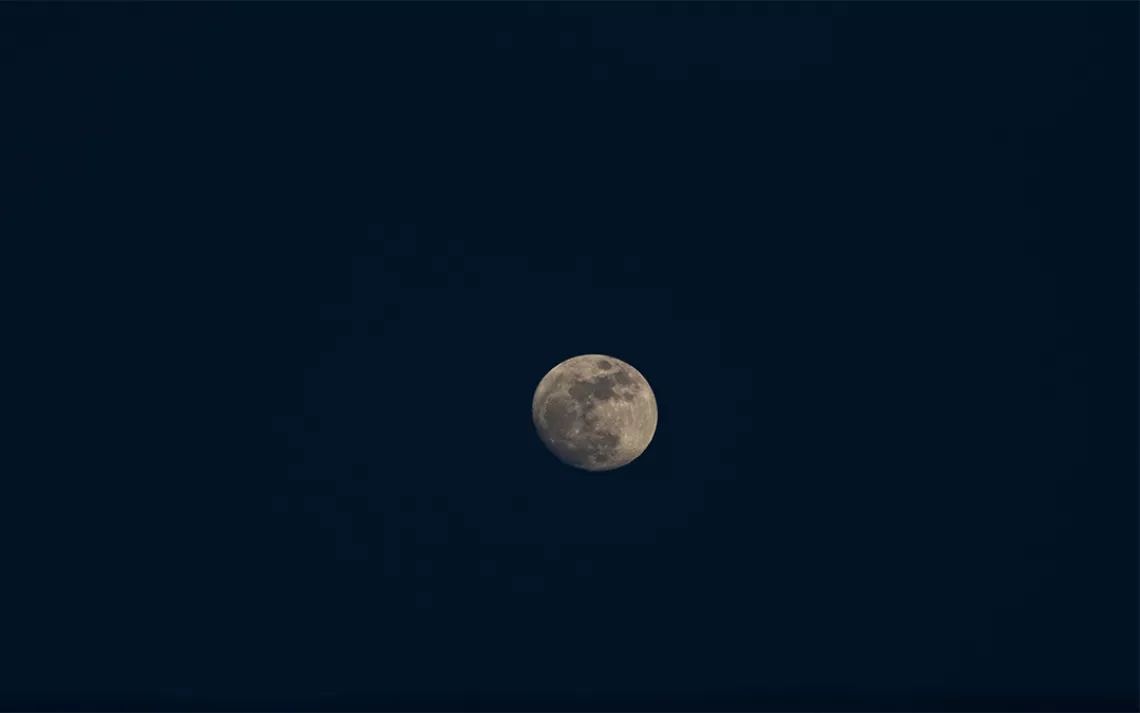February Observing Highlight: Penumbral Lunar Eclipse
The moon shines light on distant stars this month, and goes dim for a lunar eclipse

Photo by gunnerl/iStock
If you had the good fortune to have clear skies in January, you may have noticed what looks like an especially bright star near the western horizon after sunset. In fact, it’s not a star at all but the radiant planet Venus, shining brighter than all other stars and planets.
If you spotted Venus, then you probably saw Mars, too, even if you didn’t know it. Mars is just to the upper left of Venus, a reddish point of light that looks more intensely red if you view it through binoculars.
January ended with the moon in a close pairing with Venus and Mars. In February, the moon will be a little higher every evening as it waxes toward full. The full moon occurs on February 10, when a penumbral lunar eclipse will occur. A penumbral lunar eclipse is when the moon enters the outer fringes of Earth’s shadow, a type of lunar eclipse that is less noticeable because the moon gets only slightly darker.
If you are in the eastern United States, you will see the lunar eclipse in its entirety; if you’re in the Midwest, you’ll see the eclipse underway as the moon rises. Viewers along the West Coast will see the moon rise right around the time of maximum eclipse. The final stages of the eclipse will be visible as the moon begins to brighten again.
If you follow the moon’s path across the sky from night to night and month to month, you will see it trace out a specific route known as the ecliptic. This path is the plane of the solar system where you can also find the planets and, in the daytime, the sun.
But distant stars also lie along the path of the ecliptic, and sometimes the moon draws particularly close to some of the bright stars as seen from our point of view, even passing directly in front of them. The brightest stars that are occasionally occulted by the moon are Aldebaran, Antares, Pollux, Regulus, and Spica.
If you learn the stars near the ecliptic and the constellations they’re in, you’re well on your way to getting to know significant chunks of the night sky. On February 5, the moon is near Aldebaran, part of a star cluster known as Hyades that makes up the V-shaped head of Taurus.
On February 8, the bright star to the upper-left of the moon is Pollux, and the bright star next to Pollux is its twin, Castor. These two stars mark the heads of Gemini, the Twins.
On February 10 and 11, the moon is close to Regulus, part of the constellation Leo and the bottom point in the backward question mark shape that makes up the lion’s head. On February 14 and 15, the moon passes not only bright Spica in the constellation Virgo, but Jupiter, which happens to be quite close to the star right now. Virgo and the moon won’t rise above the horizon until late in the evening.
The last star that the moon occasionally occults, Antares, is currently a morning star. The moon comes near Antares as it passes through the constellation Scorpius on February 19. If you’re up before the sun, you can spot the moon above Antares. The bright point of light off to their left is Saturn.
 The Magazine of The Sierra Club
The Magazine of The Sierra Club



